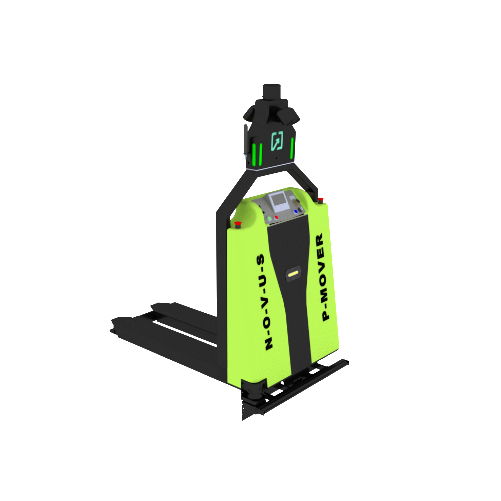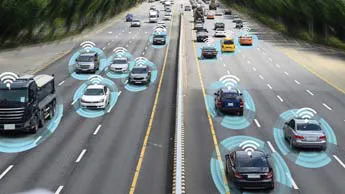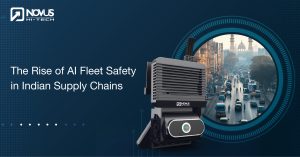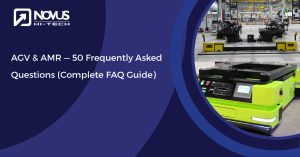The EU General Safety Regulation (GSR) stands as a pivotal milestone in the realm of road safety, specifically targeting commercial vehicles. Enforced by the European Union, this regulation mandates the incorporation of advanced safety features in new commercial vehicles, aiming to significantly reduce the occurrence of accidents and enhance overall road safety. By requiring the adoption of cutting-edge technologies, the GSR not only sets a new benchmark for vehicle safety but also underscores the EU’s commitment to prioritizing the well-being of all road users. This regulation marks a fundamental shift towards a safer and more secure road environment, emphasizing the importance of innovation and compliance in the automotive industry. Did you know that commercial vehicles, despite making up only a fraction of the total vehicles on the road, are involved in a disproportionately high number of accidents? In fact, according to recent studies, commercial vehicles account for nearly 20% of all road traffic fatalities worldwide. This alarming statistic underscores the urgent need for improved road safety measures, particularly for commercial fleets. One such measure is the EU General Safety Regulation (GSR), a groundbreaking legislation that aims to enhance safety standards for commercial vehicles through the implementation of advanced safety features.
Goal of GSR
The EU General Safety Regulation (GSR) has several key goals aimed at reducing accidents and improving road safety, particularly for commercial vehicles. Here’s an elaboration on these goals:
- Reducing Road Fatalities and Serious Injuries: One of the primary goals of the GSR is to reduce the number of road fatalities and serious injuries involving commercial vehicles. By mandating the implementation of advanced safety features, the GSR aims to mitigate the severity of accidents and save lives.
- Improving Overall Road Safety: The GSR seeks to enhance overall road safety by addressing specific risks associated with commercial vehicles. These vehicles often operate in challenging environments and carry heavy loads, making them more prone to accidents. The GSR aims to reduce these risks through the adoption of advanced safety technologies.
- Promoting Adoption of Advanced Safety Technologies: Another goal of the GSR is to promote the adoption of advanced safety technologies in commercial vehicles. By requiring the inclusion of features such as MOIS, BSIS, REIS, ISA, DDAW, and TPMS, the GSR incentivizes manufacturers to develop and implement innovative safety solutions.
- Enhancing Safety for Vulnerable Road Users: The GSR also focuses on enhancing safety for vulnerable road users, such as pedestrians and cyclists. Features like MOIS and BSIS help detect and warn drivers of the presence of pedestrians and cyclists in blind spots, reducing the risk of accidents involving these road users.
- Creating a Safer Road Environment for All: Overall, the overarching goal of the GSR is to create a safer road environment for all road users. By improving the safety standards of commercial vehicles, the GSR aims to reduce accidents, save lives, and enhance the overall quality of transportation systems.
By understanding and aligning with these goals, stakeholders in the commercial vehicle industry can contribute to the broader objectives of the GSR and help create a safer road environment for everyone.
Impact of the GSR on commercial vehicle fleets
The impact of the EU General Safety Regulation (GSR) on commercial vehicle fleets and the need for compliance is essential to convey the regulation’s significance. Here’s an elaboration on this:
- Safety Improvement: The GSR mandates the inclusion of advanced safety features in commercial vehicles, such as Moving Off Information Systems (MOIS), Blind Spot Information Systems (BSIS), and Intelligent Speed Assist (ISA). These features significantly enhance the safety of commercial vehicles by reducing the risk of accidents and improving the overall safety of drivers, passengers, and other road users.
- Legal Compliance: Compliance with the GSR is a legal requirement for commercial vehicle fleets operating in the European Union. Non-compliance can result in penalties, fines, and even the suspension of vehicle registrations. It is crucial for fleet operators to understand and adhere to the GSR to avoid legal consequences and maintain their operations.
- Reputation and Image: Adhering to the GSR demonstrates a commitment to safety and responsible business practices. It enhances the reputation and image of commercial vehicle fleets, leading to increased trust from customers, partners, and regulatory authorities. Non-compliance, on the other hand, can damage the reputation of a fleet operator and result in lost business opportunities.
- Cost Considerations: While implementing GSR-compliant safety features may incur upfront costs for fleet operators, the long-term benefits outweigh the initial investment. Reduced accident rates can lead to lower insurance premiums, decreased vehicle maintenance costs, and improved operational efficiency. Compliance with the GSR can ultimately result in cost savings for commercial vehicle fleets.
- Competitive Advantage: Compliance with the GSR can provide commercial vehicle fleets with a competitive advantage in the market. It demonstrates a commitment to safety and innovation, which can attract customers who prioritize safety when choosing transportation services. Compliance with the GSR can also differentiate commercial vehicle fleets from competitors who may not prioritize safety to the same extent.
Overall, emphasizing the impact of the GSR on commercial vehicle fleets and the need for compliance is crucial for fleet operators to understand the regulation’s benefits and implications. Compliance with the GSR not only enhances safety but also improves legal compliance, reputation, cost-effectiveness, and competitiveness for commercial vehicle fleets.
Explore how the EU General Safety Regulation (GSR) impacts your commercial fleet’s future.
Download our Brochure/E-book for expert insights on Commercial Vehicle Fleet.
Who will be impacted by GSR
- Fleet Managers: Fleet managers are responsible for overseeing and managing the operations of a fleet of commercial vehicles. They are directly involved in ensuring that vehicles comply with regulations, including the GSR. Understanding the GSR is essential for fleet managers to make informed decisions about vehicle purchases, maintenance, and driver training programs. They need to be aware of the safety features mandated by the GSR and how compliance can impact their fleet’s safety record and overall operations.
- Truck Operators: Truck operators are the drivers and operators of commercial vehicles. They are on the front lines of road safety and are directly affected by the safety features mandated by the GSR. Understanding the GSR helps truck operators to use these safety features effectively and to adopt safe driving practices. Compliance with the GSR can also affect their job requirements and performance evaluations, making it essential for them to be informed about the regulation.
- Logistics Professionals: Logistics professionals are involved in planning and coordinating the transportation of goods using commercial vehicles. They need to understand the implications of the GSR on their operations, including how compliance can affect delivery schedules, costs, and overall logistics efficiency. Knowledge of the GSR is essential for logistics professionals to make informed decisions about route planning, vehicle selection, and compliance with safety regulations.
By identifying fleet managers, truck operators, and logistics professionals as the target audience, the blog can provide them with the information and insights they need to understand the GSR, comply with its requirements, and enhance road safety for commercial vehicles. The EU General Safety Regulation (GSR) is a landmark legislation aimed at improving road safety standards for vehicles, particularly commercial vehicles, across the European Union. Enforced by the European Commission, the GSR sets out mandatory requirements for the inclusion of advanced safety features in new vehicles, with the goal of reducing road accidents and fatalities. Origins of the GSR can be traced back to the European Commission’s commitment to improving road safety as part of its broader mobility strategy. The regulation builds upon existing safety standards and incorporates advancements in technology to address emerging road safety challenges. The GSR’s implementation timeline has been phased to allow vehicle manufacturers and operators sufficient time to comply with its requirements. The regulation was officially adopted in [insert year], with a gradual rollout of specific safety features over the following years. This phased approach ensures that new vehicles entering the market are equipped with the latest safety technologies, while also allowing for the gradual replacement of older vehicles with newer, safer models. Overall, the GSR represents a significant step forward in improving road safety standards for commercial vehicles in the EU. By mandating the inclusion of advanced safety features, the regulation aims to reduce the number of accidents and fatalities on European roads, making transportation safer for all road users.
Scope of the GSR
The scope of the EU General Safety Regulation (GSR) is comprehensive, covering different categories of commercial vehicles, including trucks, buses, and trailers. The regulation applies to new vehicles of these categories that are type-approved and registered in the European Union. For trucks, the GSR mandates the inclusion of various safety features, such as Blind Spot Information Systems (BSIS), Reversing Information Systems (REIS), and Intelligent Speed Assist (ISA). These features are designed to enhance the safety of truck drivers and other road users by reducing the risk of accidents. Similarly, for buses, the GSR requires the inclusion of safety features that improve the overall safety of passengers and other road users. These features may include Emergency Stop Signal (ESS), Lane Keeping Assist (LKA), and Advanced Driver Assistance Systems (ADAS), among others. Trailers are also covered under the scope of the GSR, with requirements for safety features that enhance the overall safety of the trailer and its interaction with other road users. These features may include Trailer Stability Control (TSC), Tire Pressure Monitoring Systems (TPMS), and Advanced Coupling Systems (ACS), among others. Overall, the scope of the GSR is broad, covering different categories of commercial vehicles and requiring the inclusion of advanced safety features to improve road safety standards across the European Union.
Mandatory Safety Features Introduced by the GSR
Here’s a detailed explanation of the specific safety features mandated by the EU General Safety Regulation (GSR) for new vehicle homologations:
- Moving Off Information System (MOIS):
- MOIS is designed to detect pedestrians or cyclists in blind spots near the vehicle.
- It uses sensors and cameras to monitor the surrounding area and alerts the driver through visual or audible warnings if a pedestrian or cyclist is detected.
- MOIS helps prevent accidents by increasing driver awareness of vulnerable road users near the vehicle, especially during maneuvers such as turning or merging.
- Blind Spot Information System (BSIS):
- BSIS alerts drivers of vehicles in their blind spots when changing lanes.
- It uses sensors placed around the vehicle to detect vehicles in adjacent lanes that may not be visible in the side mirrors.
- When a vehicle is detected in the blind spot, BSIS provides visual or audible warnings to alert the driver, reducing the risk of collisions during lane changes.
- Reversing Information System (REIS):
- REIS provides a visual aid for drivers when reversing, reducing the risk of backing up accidents.
- It typically consists of rear-view cameras or sensors that provide the driver with a clear view of the area behind the vehicle.
- REIS helps drivers maneuver safely in tight spaces and avoid obstacles or pedestrians that may be behind the vehicle.
- Intelligent Speed Assist (ISA):
- ISA helps prevent speeding by providing visual or audible warnings when exceeding the speed limit.
- It uses GPS technology to determine the vehicle’s location and compares it to a database of speed limits for the area.
- If the vehicle exceeds the speed limit, ISA alerts the driver to slow down, promoting safer driving behavior and reducing the risk of accidents.
- Driver Drowsiness & Alertness Warning (DDAW):
- DDAW monitors driver behavior for signs of fatigue and warns them to take a break.
- It uses sensors to detect changes in the driver’s behavior, such as erratic steering or decreased reaction times.
- When signs of fatigue are detected, DDAW alerts the driver through visual or audible warnings, prompting them to rest and prevent accidents due to drowsy driving.
- Tire Pressure Monitoring System (TPMS):
- TPMS keeps drivers informed about tire pressure levels, ensuring safe tire operation.
- It uses sensors to monitor the air pressure in each tire and alerts the driver if any tire is underinflated.
- Properly inflated tires improve vehicle handling and braking, reduce the risk of blowouts, and increase fuel efficiency, enhancing overall road safety.
These safety features mandated by the GSR are designed to enhance the safety of commercial vehicles and reduce the risk of accidents on European roads.
Benefits of GSR Compliance for Commercial Vehicle Fleets
Complying with the EU General Safety Regulation (GSR) offers several benefits for fleet operators, translating into enhanced road safety, improved driver performance, lower insurance costs, a positive public image, and increased driver satisfaction.
- Enhanced Road Safety: Complying with the GSR means equipping vehicles with advanced safety features like MOIS, BSIS, and REIS, which significantly reduce the risk of accidents and fatalities. These features enhance driver awareness and visibility, especially in critical situations such as blind spots and reversing maneuvers, leading to safer operations on the road.
- Improved Driver Performance: Features like Intelligent Speed Assist (ISA) and Driver Drowsiness & Alertness Warning (DDAW) promote safe driving habits and reduce fatigue-related incidents. ISA helps drivers maintain safe speeds, while DDAW monitors driver behavior and alerts them to take breaks when signs of fatigue are detected. This leads to improved driver performance and reduced risk of accidents due to human error.
- Lower Insurance Costs: Insurance companies may offer discounts to fleets with GSR-compliant vehicles. By demonstrating a commitment to safety through compliance with the GSR, fleet operators can reduce their insurance premiums, leading to cost savings over time.
- Positive Public Image: Prioritizing safety by complying with the GSR can enhance the reputation and image of a fleet operator. Customers, partners, and the public are more likely to trust and support companies that prioritize safety, leading to increased business opportunities and brand loyalty.
- Increased Driver Satisfaction: Advanced safety features not only improve road safety but also create a safer and more comfortable work environment for drivers. Features like ISA and DDAW reduce the risk of accidents and fatigue-related incidents, making driving jobs safer and more appealing. This can lead to increased driver satisfaction and retention rates for fleet operators.
Overall, complying with the GSR offers numerous benefits for commercial vehicle fleets, including enhanced road safety, improved driver performance, lower insurance costs, a positive public image, and increased driver satisfaction. By investing in advanced safety technologies and complying with regulatory standards, fleet operators can improve their operations and contribute to safer roads for everyone.
Implementation Considerations and Challenges
Transitioning to GSR-compliant vehicles involves several practical considerations for fleet operators, including the cost of new vehicles, driver training, and fleet maintenance adjustments.
- Cost of New Vehicles: Purchasing new vehicles equipped with GSR technologies can involve significant upfront costs for fleet operators. These costs include the purchase price of the vehicles themselves, as well as any additional costs associated with installing and integrating the required safety features. However, it’s important to consider these costs as an investment in improved road safety and operational efficiency, which can lead to long-term cost savings and benefits.
- Driver Training: Training drivers on how to use and maximize the benefits of new safety features is essential for ensuring their effective implementation. Drivers need to understand how the new technologies work, as well as how to respond to alerts and warnings provided by these systems. Proper training can help drivers use GSR technologies to their full potential, enhancing road safety and reducing the risk of accidents.
- Fleet Maintenance: Transitioning to GSR-compliant vehicles may require adjustments to fleet maintenance routines to ensure the proper functioning of GSR technologies. Regular maintenance checks and updates may be necessary to keep these systems in optimal condition. Additionally, fleet operators may need to invest in new tools and equipment for maintaining GSR technologies, as well as training maintenance staff on how to service these systems effectively.
Transitioning to GSR-compliant vehicles involves practical considerations related to the cost of new vehicles, driver training, and fleet maintenance adjustments. While these considerations may require upfront investment and effort, they are essential for ensuring the successful implementation of GSR technologies and improving road safety for commercial vehicle fleets.






















